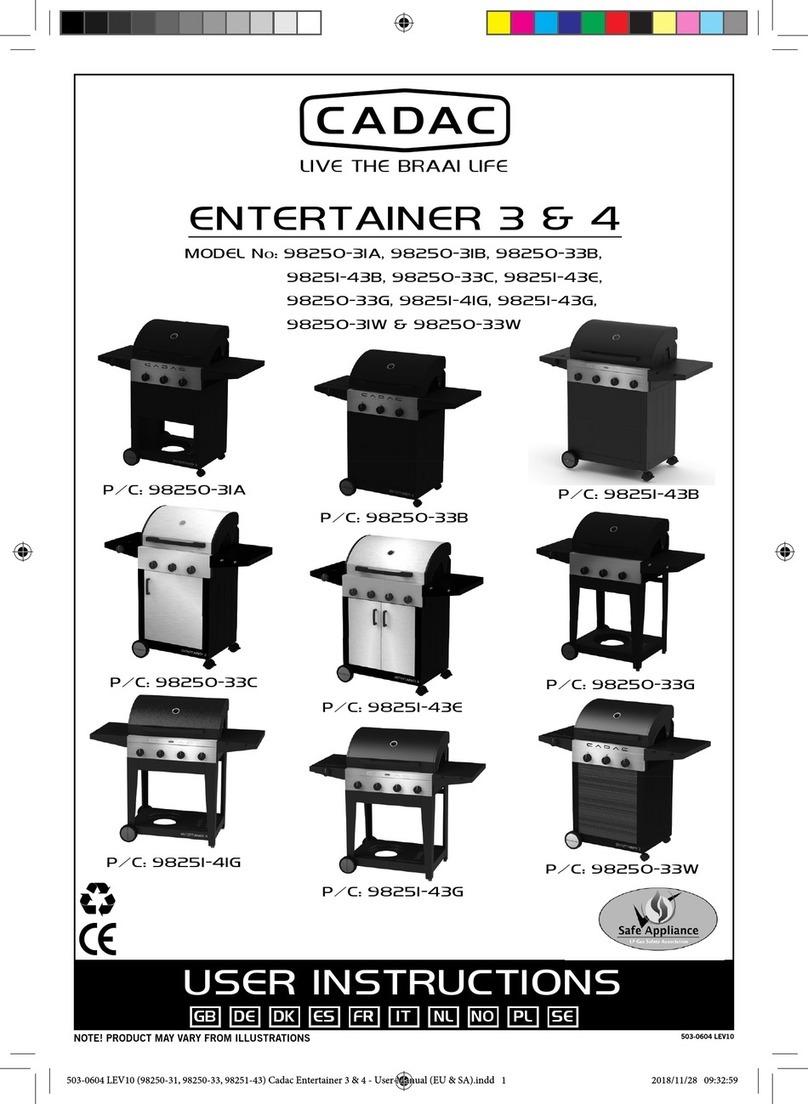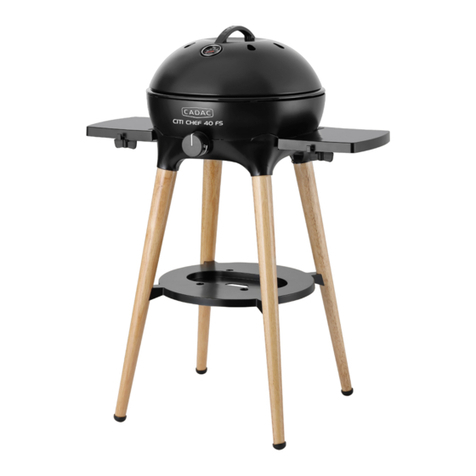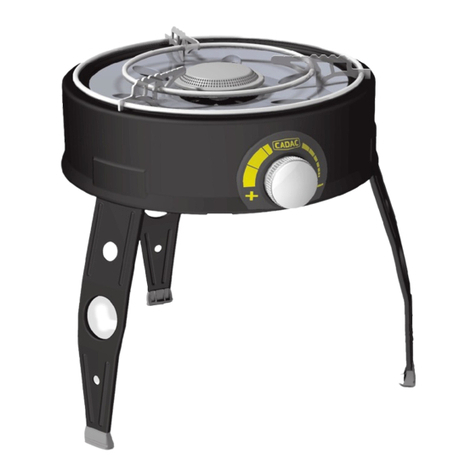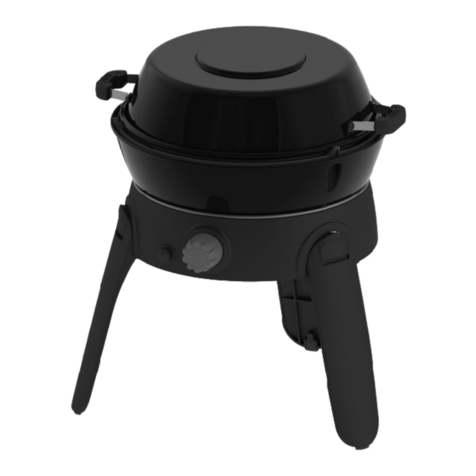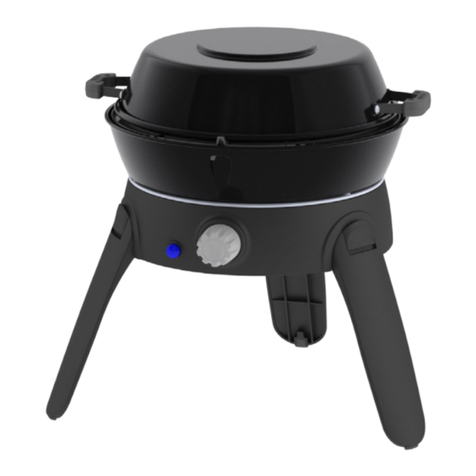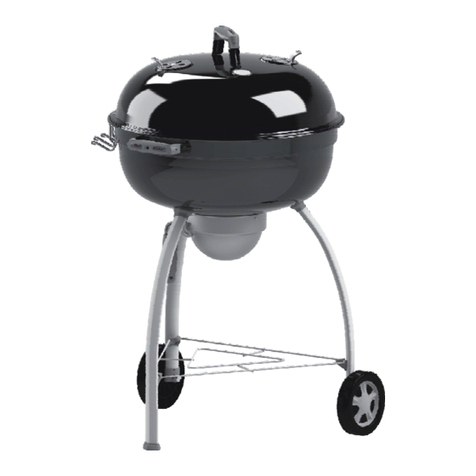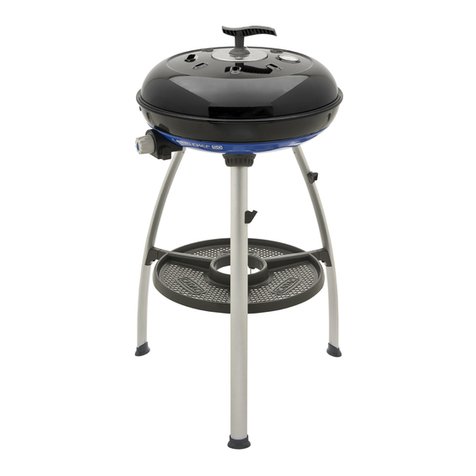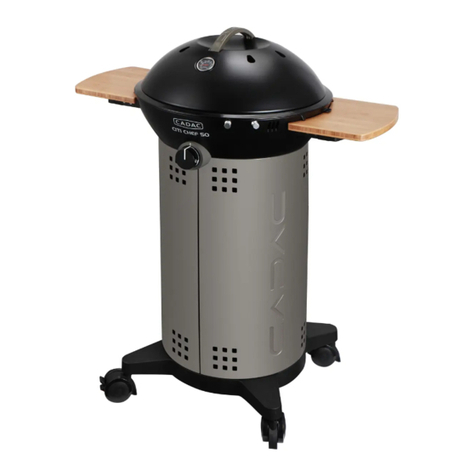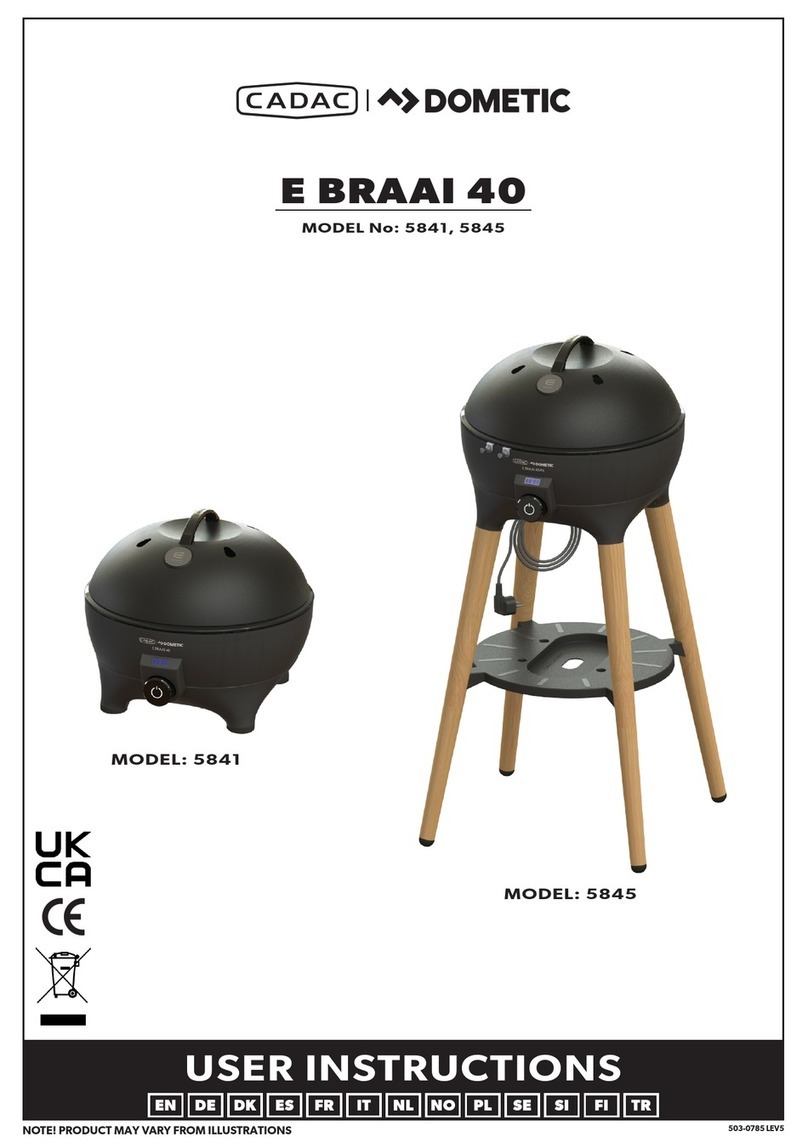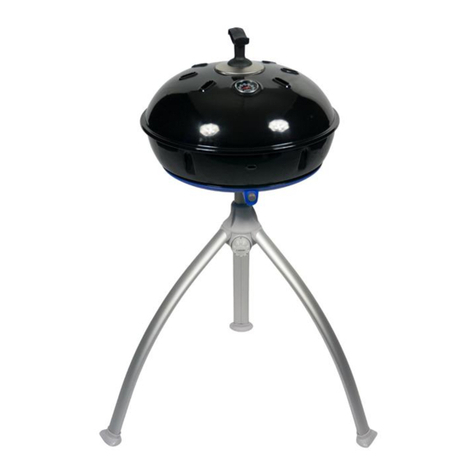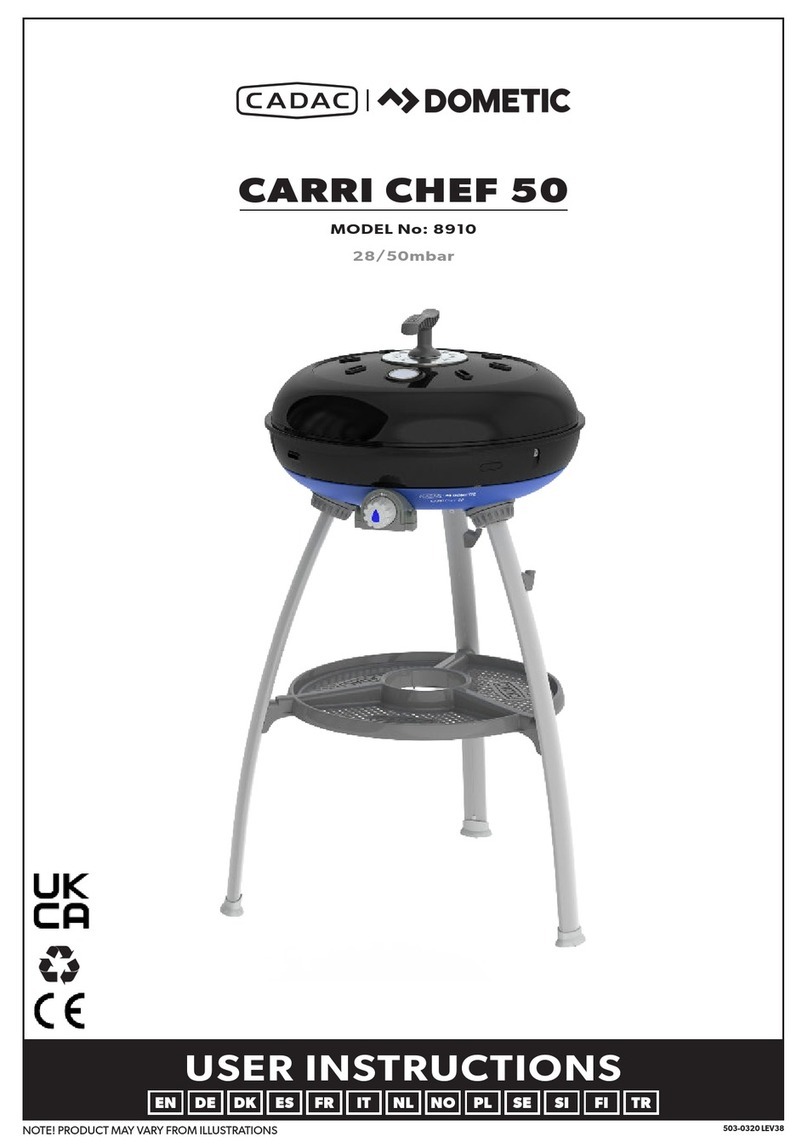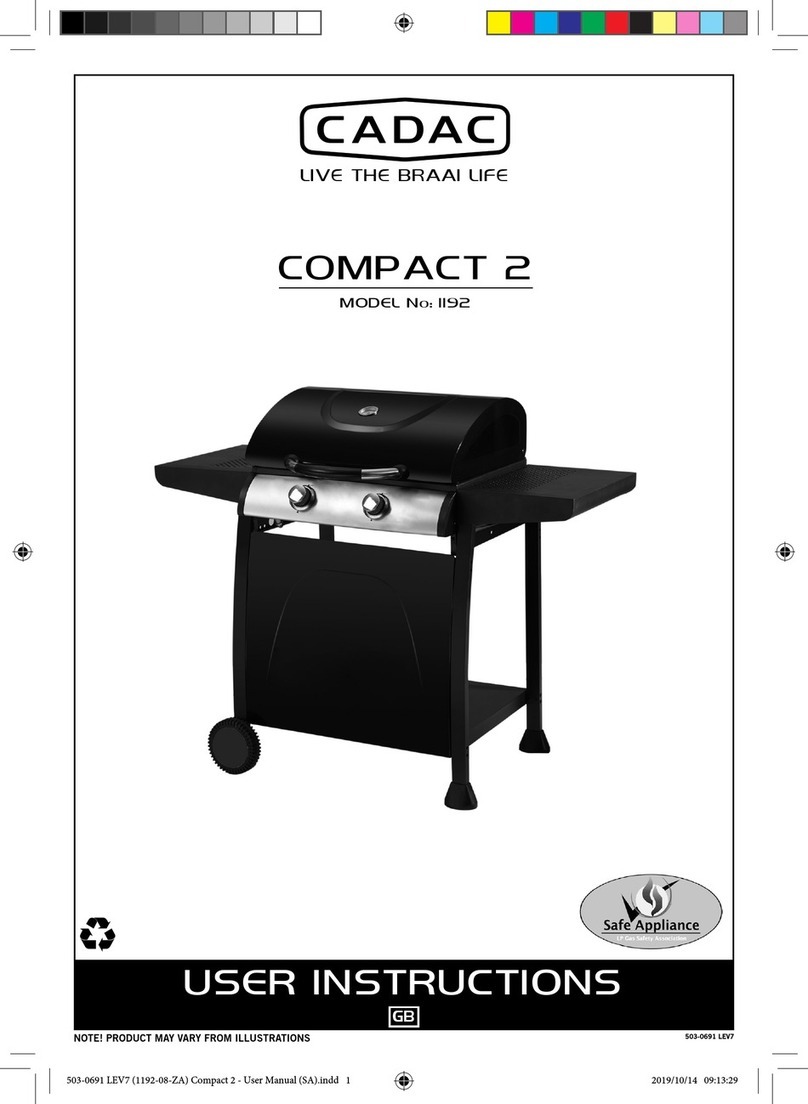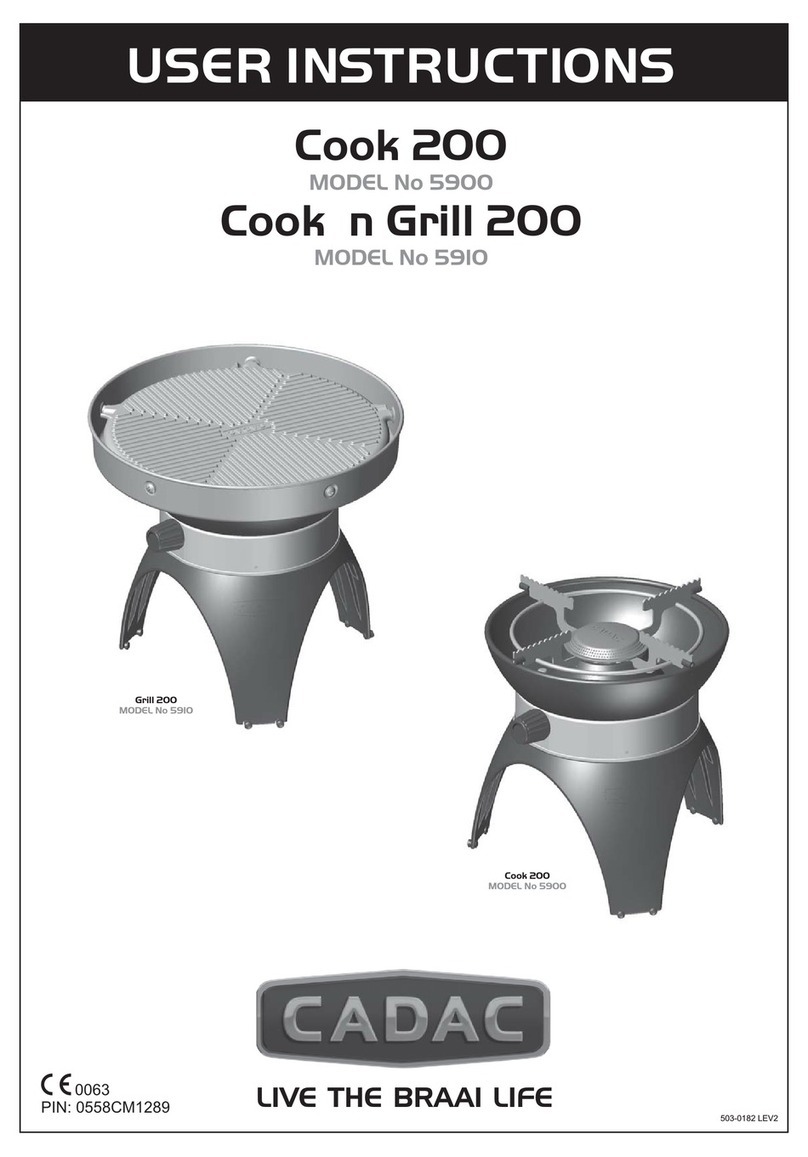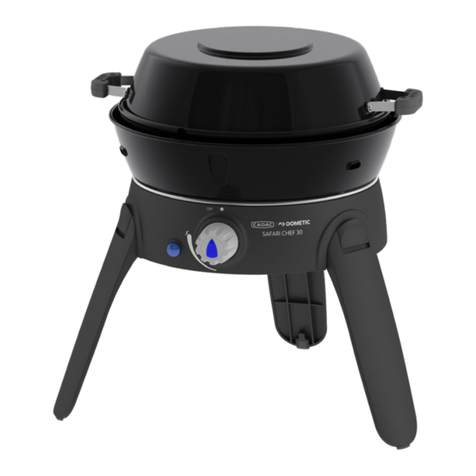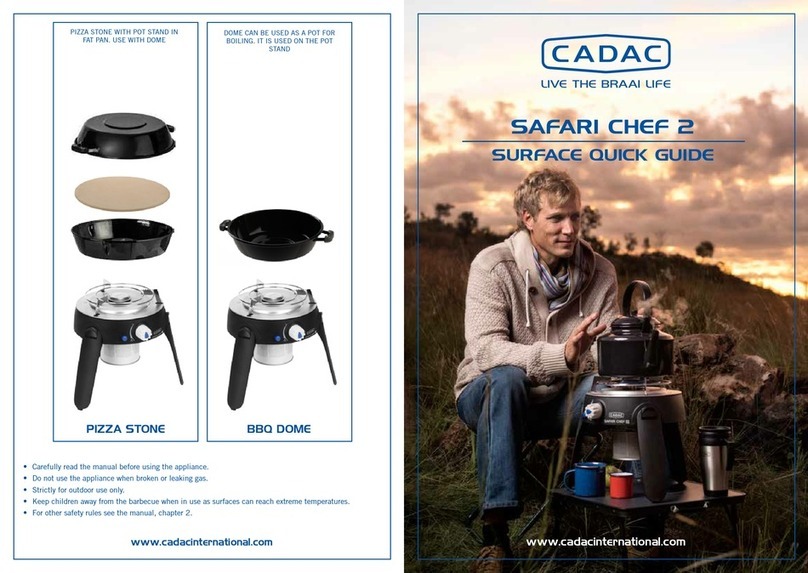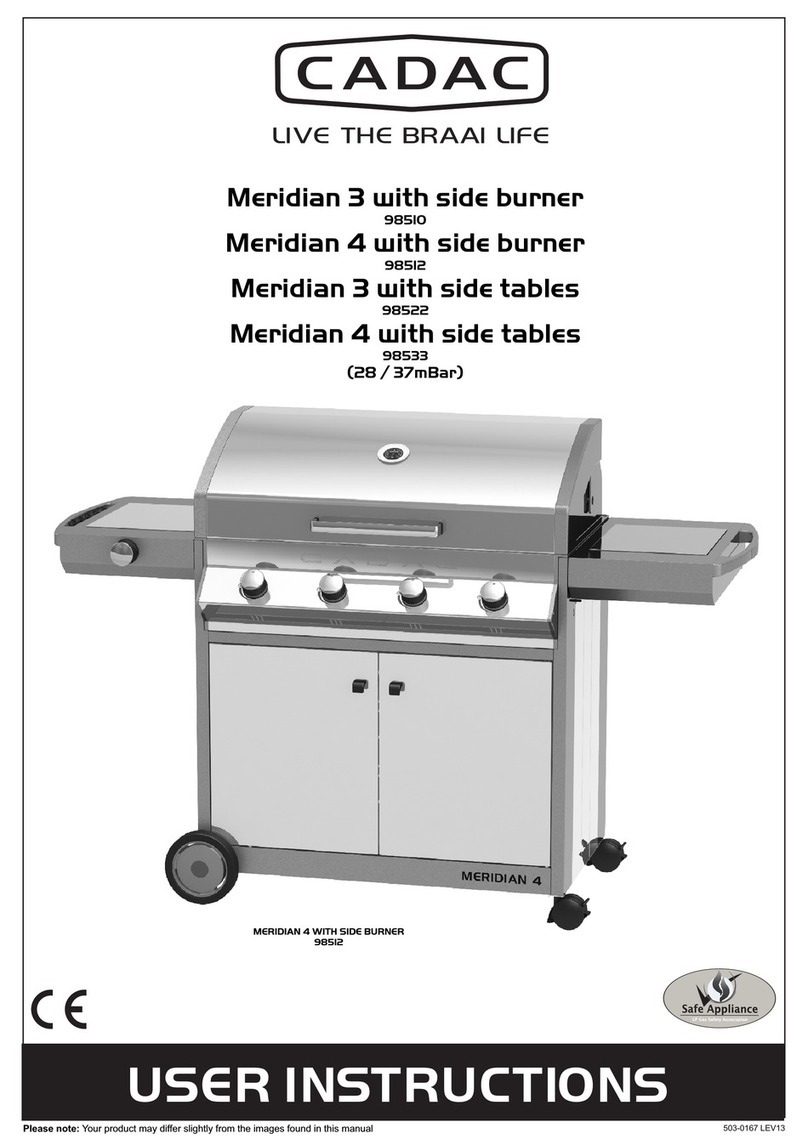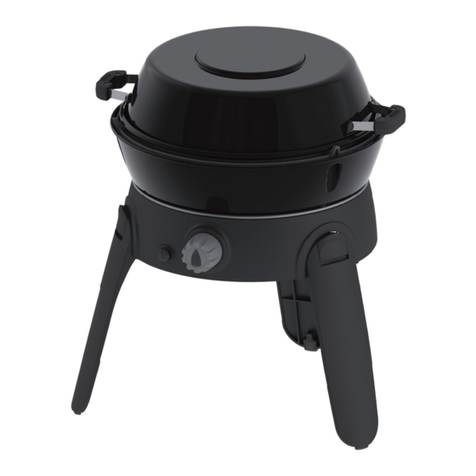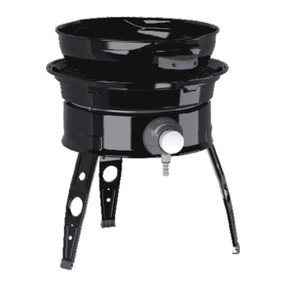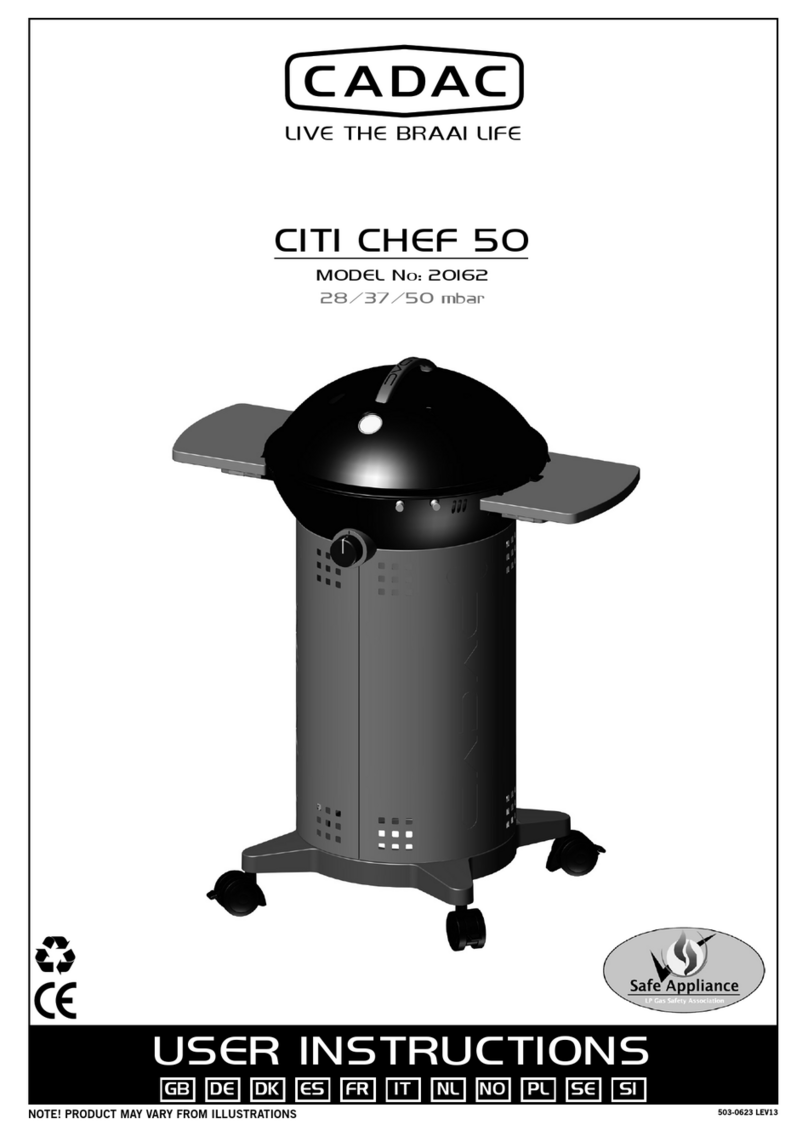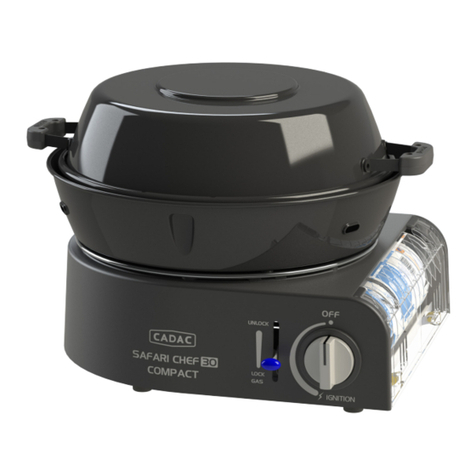
66
6. Cleaning
• It is recommended to clean your appliance aer every use. This will prolong the life of your appliance.
• Allow the appliance to cool down before you clean it.
• Use a damp cloth wrung out in a solution of soapy water to clean exterior surfaces.
• To clean the stove body, simply wipe with a damp cloth using a little detergent, if necessary.
• DO NOT IMMERSE IN WATER as this will allow water to get into the burner tube causing the appliance to malfunction.
• The grill plate is coated with a tough durable ceramic non-stick coating that has been used with great success on some of the best cookware
in the world. Never the less, taking care of it can help you to enjoy extra years of healthy, easy, non-stick cooking.
• Whilst the ceramic non-stick coating is very durable, it can easily be damaged by the use of metal cooking utensils. It is therefore
recommended that only plastic or wooden utensils be used when cooking.
• Always allow the grill/flat plate to cool before immersing it in water.
• Make sure that no water gets onto the burners or pilot/light area. Wipe the appliance completely dry before use.
• Do not use abrasive cleaners as they may damage the surfaces.
• Clean the appliance aer each use. Aer cleaning recondition the cooking surface with a light wipe of oil.
• Do not use any high-pressure steam equipment or a water jet to clean the appliance.
• Note: For stubborn stains, CADAC oven cleaner may be used.
7. Storage
• Always allow the unit to cool down and be cleaned before storing.
• Turn off the gas supply to the appliance, disconnect and remove the gas supply from the appliance.
• Never store an appliance with the gas supply connected, this is an unsafe practice.
• Store the appliance and gas supply in a well-ventilated area away from combustible material. Storage of cylinders should preferably be
outdoors and must NOT be in a basement.
Frying: This option is ideal for stir-fries, fish, breakfast, pancakes, prawns, paella and vegetables. For this type of cooking, use the flat grill.
Please note that being a shallow pan, it is not suitable for deep-frying. The easy clean surface encourages the minimum use of fat for healthy
cooking.
Boiling: For this type of cooking, place the pot stand in its locator grooves ensuring that it is properly seated. Place a suitable pot (not less than
180mm diameter and not more than 250mm diameter). One liter of water will boil in approximately 6 minutes depending on the conditions,
size of pot used, etc. Use windshields in case of windy conditions
Note: When using small sized pots do not attempt to use pots with plastic handles as these can get extremely hot.
Paella: This cooking option is ideal for preparing paellas, risottos, pasta dishes, traditional breakfasts etc. The Paella Pan is made from a high
quality pressed aluminium which allows for excellent heat distribution and retention.
8. Maintenance & troubleshooting
Maintenance
• If you clean and maintain your appliance on a regular basis, the life of your appliance will extend and the possibility of problems will
decrease.
• We recommend the service of your appliance to be every twelve (12) months by a service agent to ensure continued efficient operation.
• This appliance must only be serviced by an authorized person.
• Check your gas hose and connections regularly for any signs of leaks and every time the gas cylinder is re-filled or fitted to the appliance
with every use.
Troubleshooting
In the case of a spattering flame or jet blockage:
• Clean your burner ports in case of an over spill.
• We recommend to clean or replace the jets every six (6) months to ensure continued efficient operation of your appliance.
• Should the appliance operate abnormally aer storage and all checks have not isolated the problem, the jet may be blocked. A blocked
jet would be indicated by a weaker yellowish flame or no flame at all in extreme cases. Under these circumstances it will be necessary to
remove and check and thoroughly clean out any foreign matter which may have gathered in the appliance.
• This may be done by removing the jet using standard tools and blow any dirt from the jet, alternatively, you may purchase new jets from your
local store. Do not attempt to clean the jet mechanically.
Replacing a Blocked Jet:
• Ensure that the cylinder valve is closed, then disconnect the appliance from the gas cylinder.
• Remove the Potstand/cooking surfaces from the stove body.
• Turning the appliance upside down, unscrew the screws holding the bracket of the burner to the body.
• From the top now, you can safely remove the burners from the appliance.
• Unscrew the blocked jet from the valve with a suitable spanner and replace it with a new jet.
• Do not over tighten as this may damage the Jet. To re-assemble, reverse the above procedure.
• Do not use pliers on the jet as this may damage the jet making it unusable or impossible to remove.
Replacing the Hose:
• The fitting of a hose is described in Section 2.
EN
